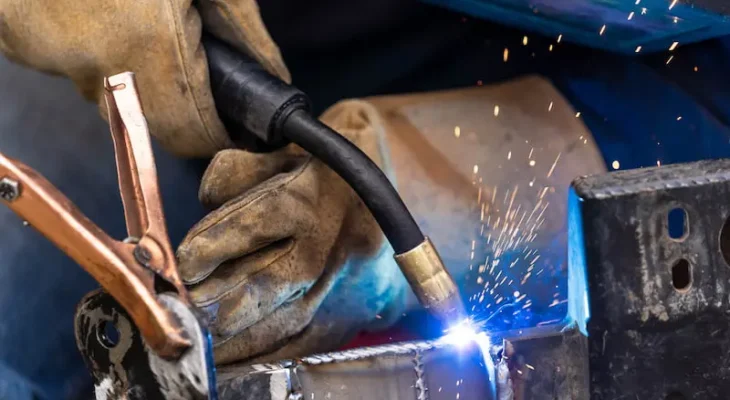One of the most widely used types of welders is the MIG welder. The process that a MIG welder uses is called gas metal arc welding (GMAW). These welders work by feeding a wire which is the electrode through a welding gun. At the same time there is a continuous flow of inert shielding gas. This protects the weld while it cools.
The most common gases used are carbon dioxide for general purpose welding. It is the cheapest of the welding gases, and creates a good weld. Argon and carbon dioxide is also use in a mixture to have an arc with less spatter, giving cleaner welds. Pure argon gas is use to obtain the best welds when welding aluminum.
The GMAW process have a number of advantages over the other common processes. The welding gun has a trigger to control the electrode which allows you to position it without accidentally striking an arc. When you have it in the correct place all you have to do is flip down your helmet and pull the trigger.
The inert shielding gases make the seams smooth and clean. There is no slag to chip off. MIG welders are also very well suite to sheet metal and thinner metals. This is because they can weld at lower amperage than most. MIG always use DC current to strike the welding arc. This is because using alternating current doesn’t give you a steady arc.
On a MIG welder you can adjust the voltage, amperage and the speed at which the wire is fed through the welder. The tensioner on the welding wire is variable as well They will also have a valve to control the flow of gas.
It is also possible to use a mig welder without the shielding gas. This is call flux core arc welding (FCAW). Most welders have the option of switching the polarity of the arc for use with flux cored wire. In this process the wire has a hollow core that is fill with flux.

